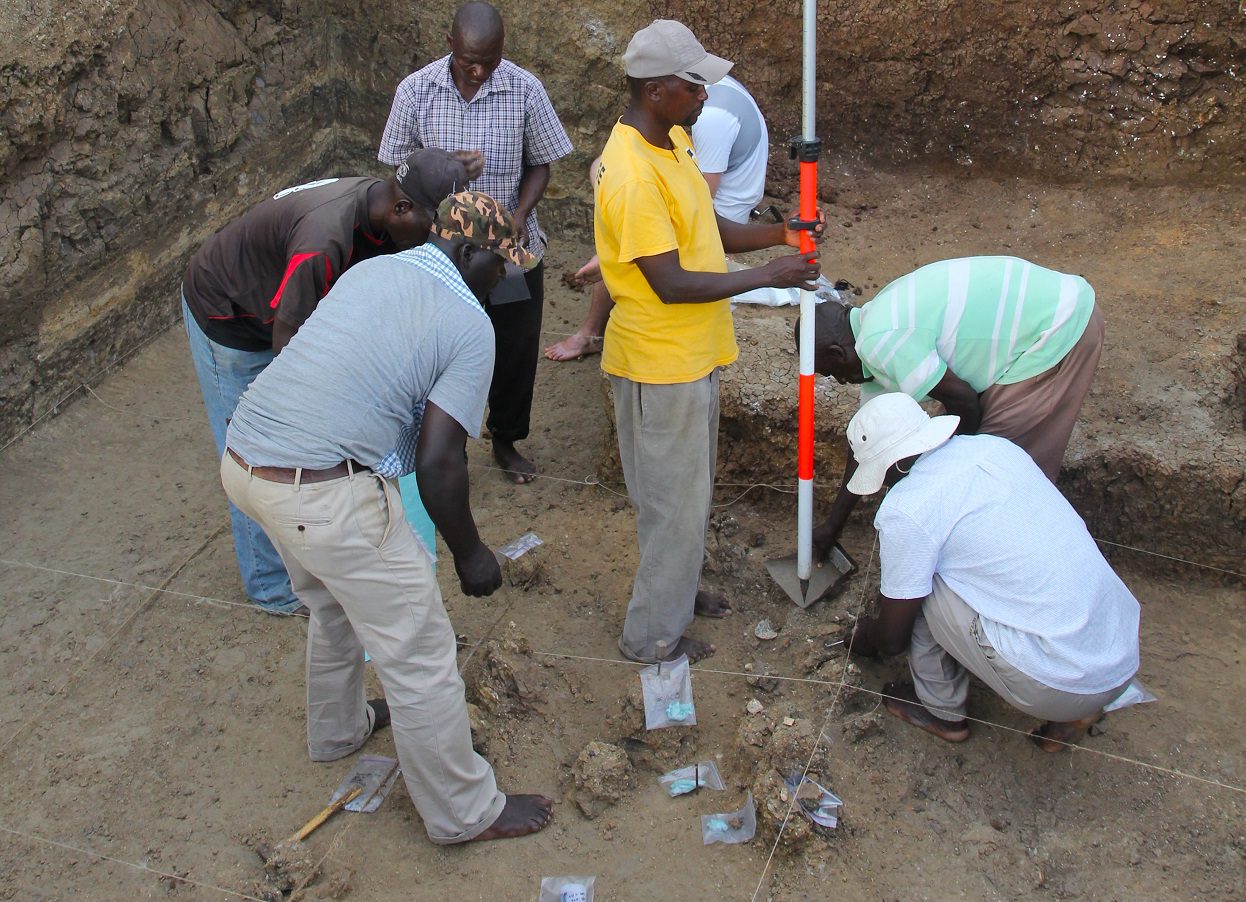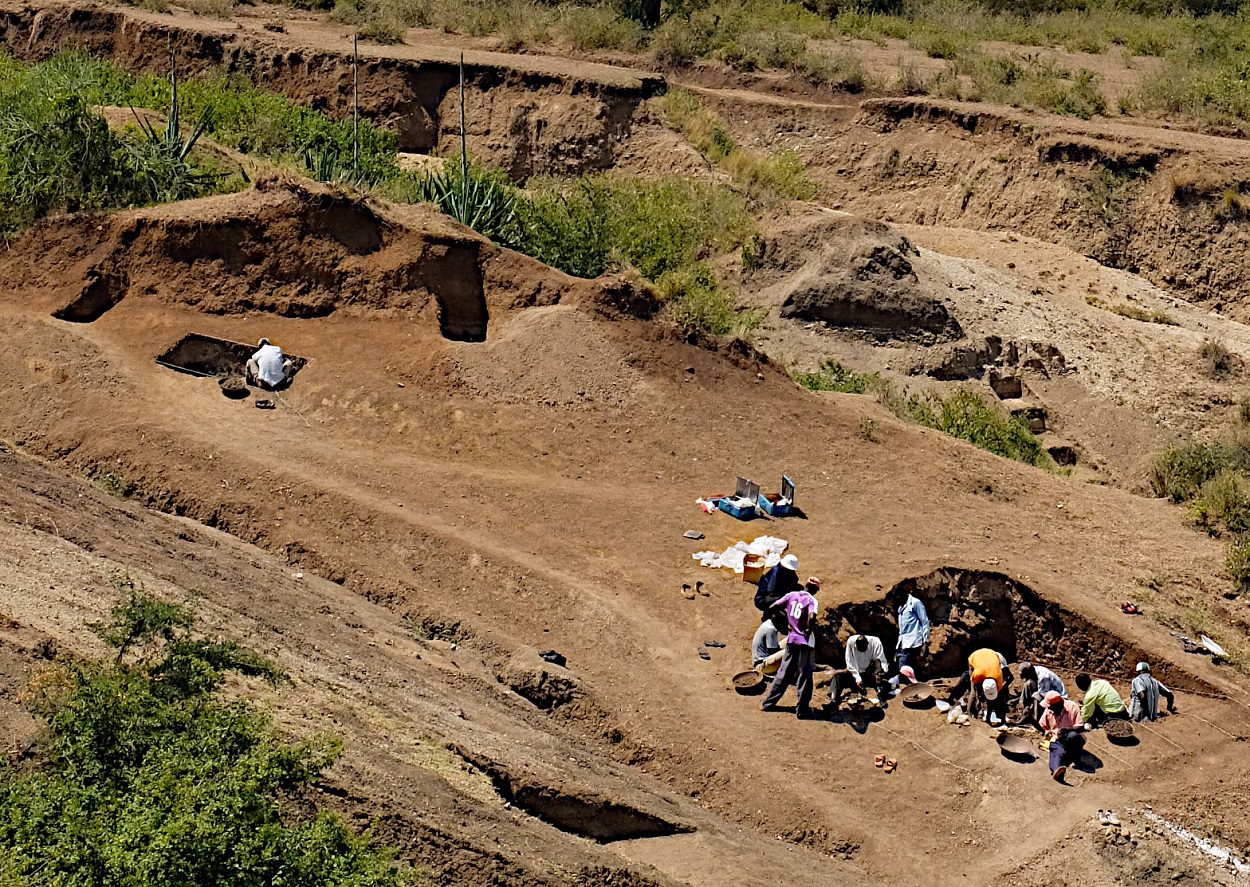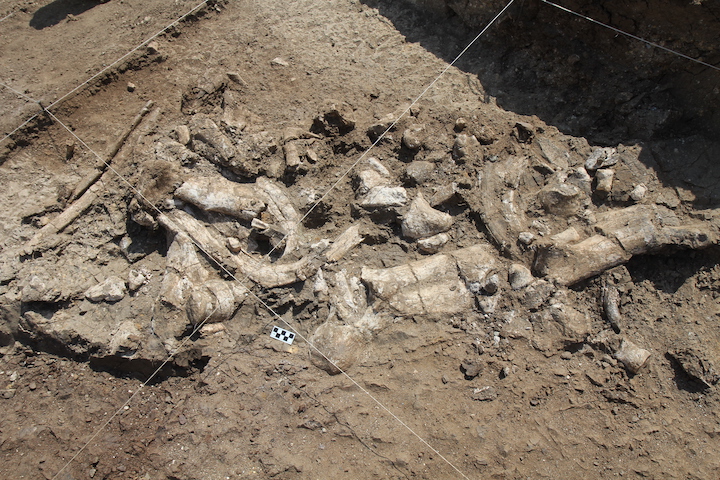According to a new study, our early human ancestors used some of the oldest stone tools ever found to butcher hippos on the shores of Africa’s Lake Victoria, some 2.9-million-years-ago.
The study, published in the journal Science, presents what is likely the oldest innovation in stone-age technology, otherwise known as the Oldowan toolkit, in addition to what is possibly the oldest evidence of hominins consuming large fauna.
The toolkit was discovered at an archaeological site called Nyayanga on the Homa Peninsula in western Kenya, where excavations found the toolkit along with a pair of molars belonging to Paranthropus, a genus of extinct hominin.
Paranthropus lived between approximately 2.6 and 1.2 million years ago (mya) from the end of the Pliocene to the Middle Pleistocene, however, the discovery of molars at a site with 2.9-million-year-old stone tools now raises new questions about which human ancestor made the tools.
 Image Credit : Ryan Lavery (Smithsonian)
Image Credit : Ryan Lavery (Smithsonian)
“The assumption among researchers has long been that only the genus Homo, to which humans belong, was capable of making stone tools,” said Rick Potts, senior author of the study and the National Museum of Natural History’s Peter Buck Chair of Human Origins. “But finding Paranthropus alongside these stone tools opens up a fascinating whodunnit.”
Whichever hominin lineage was responsible for the tools, they were found more than 800 miles from the previously known oldest examples of Oldowan stone tools—2.6-million-year-old tools unearthed in Ledi-Geraru, Ethiopia.
This greatly expands the area associated with Oldowan technology’s earliest origins. Furthermore, the stone tools from the site in Ethiopia could not be tied to any particular function or use, leading to speculation about what the Oldowan toolkit’s earliest uses might have been.

Through an analysis of the wear patterns on the stone tools and animal bones discovered at Nyayanga, the team have showed that these stone tools were used by early human ancestors to process a wide range of materials and foods, including plants, meat and even bone marrow.
The Oldowan toolkit includes three types of stone tools: hammerstones, cores and flakes. Hammerstones can be used for hitting other rocks to create tools or for pounding other materials.
Cores typically have an angular or oval shape, and when struck at an angle with a hammerstone, the core splits off a piece, or flake, that can be used as a cutting or scraping edge or further refined using a hammerstone.
“With these tools you can crush better than an elephant’s molar can and cut better than a lion’s canine can,” Potts said. “Oldowan technology was like suddenly evolving a brand-new set of teeth outside your body, and it opened up a new variety of foods on the African savannah to our ancestors.”
Beginning in 2015, a series of excavations at Nyayanga returned a trove of 330 artefacts, 1,776 animal bones and the two hominin molars identified as belonging to Paranthropus. The artefacts were clearly part of the stone-age technological breakthrough that was the Oldowan toolkit.
Compared to the only other stone tools known to have preceded them—a set of 3.3-million-year-old artifacts unearthed at a site called Lomekwi 3, just west of Lake Turkana in Kenya—Oldowan tools were a significant upgrade in sophistication.
Oldowan tools were systematically produced and often fashioned using what is known as “freehand percussion,” meaning the core was held in one hand and then struck with a hammerstone being wielded by the opposing hand at just the right angle to produce a flake— a technique that requires significant dexterity and skill.
By contrast, most of the artefacts from Lomekwi 3 were created by using large stationary rocks as anvils, with the toolmaker either banging a core against the flat anvil stone to create flakes or by setting the core down on the anvil and striking it with a hammerstone. These more rudimentary modes of fabrication resulted in larger, cruder and more haphazard-looking tools.
Over time, the Oldowan toolkit spread all the way across Africa and even as far as modern-day Georgia and China, and it was not meaningfully replaced or amended until some 1.7 million years ago when the hand-axes of the Acheulean first appeared.
As part of their study, the researchers conducted microscopic analysis of wear patterns on the stone tools to determine how they were used, and they examined any bones seen to exhibit potential cut marks or other kinds of damage that might have come from stone tools.
The site featured at least three individual hippos. Two of these incomplete skeletons included bones that showed signs of butchery. The team found a deep cut mark on one hippo’s rib fragment and a series of four short, parallel cuts on the shin bone of another. The researchers also found antelope bones that showed evidence of hominins slicing away flesh with stone flakes or of having been crushed by hammerstones to extract marrow.
The analysis of wear patterns on 30 of the stone tools found at the site showed that they had been used to cut, scrape and pound both animals and plants. Because fire would not be harnessed by hominins for another 2 million years or so, these stone toolmakers would have eaten everything raw, perhaps pounding the meat into something like a hippo tartare to make it easier to chew.
Using a combination of dating techniques, including the rate of decay of radioactive elements, reversals of Earth’s magnetic field and the presence of certain fossil animals whose timing in the fossil record is well established, the research team was able to date the items recovered from Nyayanga to between 2.58 and 3 million years old, with a likely date of 2.9 million years.

“This is one of the oldest if not the oldest example of Oldowan technology,” said Thomas Plummer of Queens College, research associate in the scientific team of the Smithsonian’s Human Origins Program. “This shows the toolkit was more widely distributed at an earlier date than people realised, and that it was used to process a wide variety of plant and animal tissues. We don’t know for sure what the adaptive significance was but the variety of uses suggests it was important to these hominins.”
The discovery of teeth from the muscular-jawed Paranthropus alongside these stone tools begs the question of whether it might have been that lineage rather than the Homo genus that was the architect of the earliest Oldowan stone tools, or perhaps even that multiple lineages were making these tools at roughly the same time.
Src: heritagedaily.com








